AP field guide: How to audit accounts payable
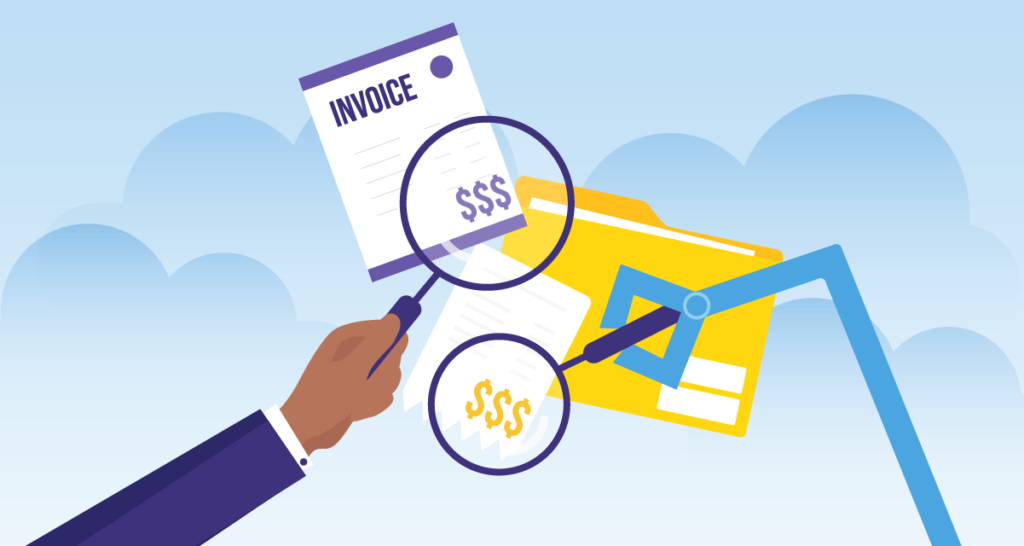
For most businesses, AP is the second-biggest expense after payroll. It’s also a prime target for fraud and costly errors. AP departments handle a lot of transactions, invoices, and payments. Without the right safeguards, your company could join the thousands of businesses that lose money to fraud each year. With an average loss of $1.7 million per case, preventing fraud is not a risk many businesses can afford.
Accounts payable audits are among the most effective ways to detect and prevent fraud and errors, keep a complete audit trail, and validate internal controls. In this article, we’ll explain how to audit accounts payable in your business. You’ll learn why, when, and how you should perform an AP audit to protect your business and ensure optimal AP processes. We’ll share the different audit types, the steps of a typical audit, best practices for auditing AP, and how AP automation makes auditing more efficient and effective.
Why do you need an accounts payable audit?
AP audits offer four benefits to businesses: fraud detection, error identification and correction, compliance, and process improvement.
Benefit 1: Fraud detection and prevention
In Occupational Fraud 2024: A Report to the Nations, the Association of Certified Fraud Examiners (ACFE) said there were 1921 reported causes of occupational fraud in 2023, causing total losses of over $3.1 billion. The average loss per case was $1.7 million.
According to the ACFE, the most common type of occupational fraud is asset misappropriation, occurring in 89% of reported cases. Asset misappropriation fraud involves one or more employees stealing or misusing their employer’s resources. It includes accounts payable schemes such as check or payment tampering, false billing, theft or misuse of cash on hand (petty cash), and skimming.
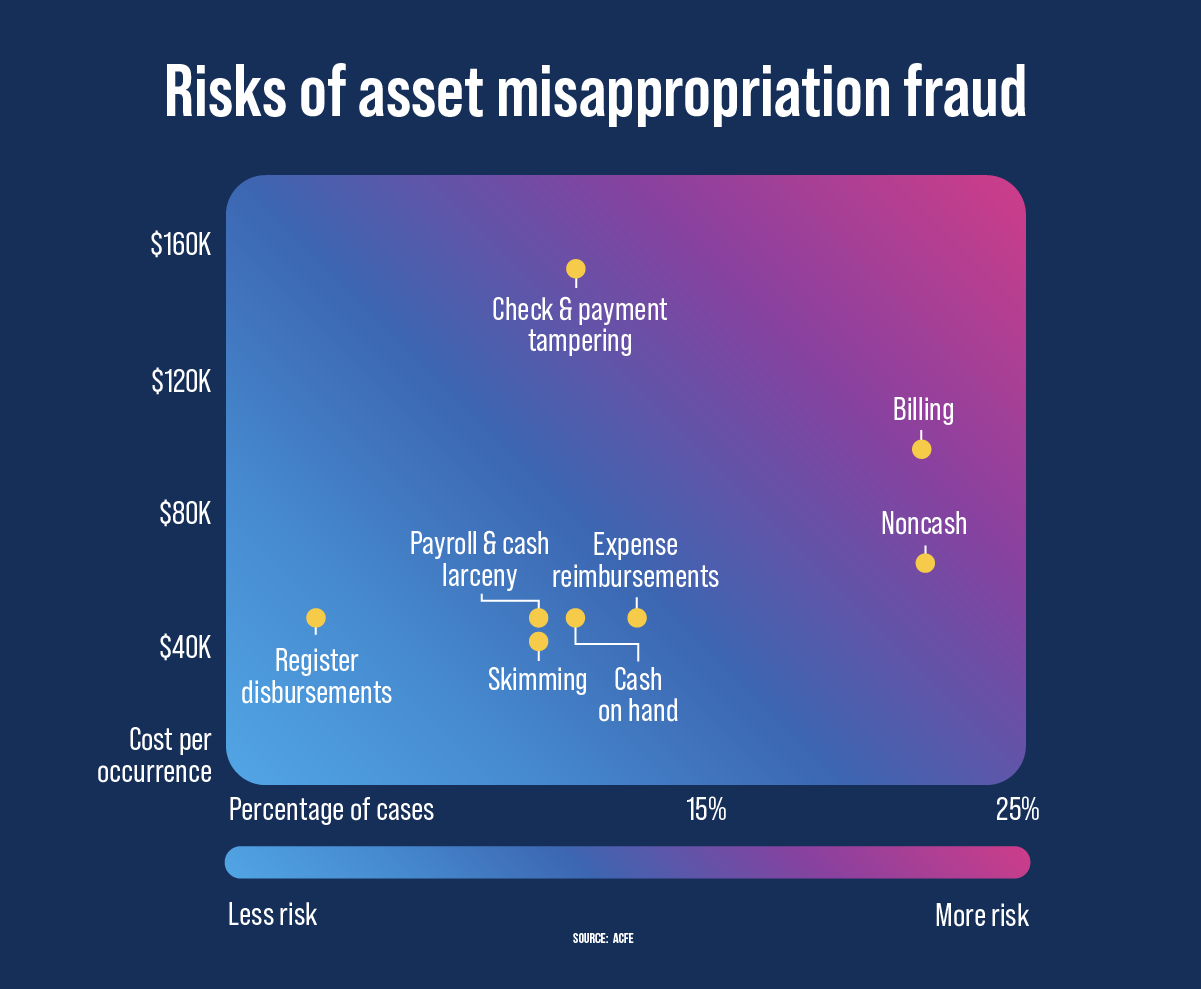
In their report, the ACFE said that more than half (51%) of all fraud cases occurred due to a lack of internal controls or fraudsters overriding existing controls. Fraudsters concealed their activities by creating, altering, or destroying physical documents such as invoices or checks, creating, altering, or deleting electronic documents, and creating or altering transactions in accounting systems.
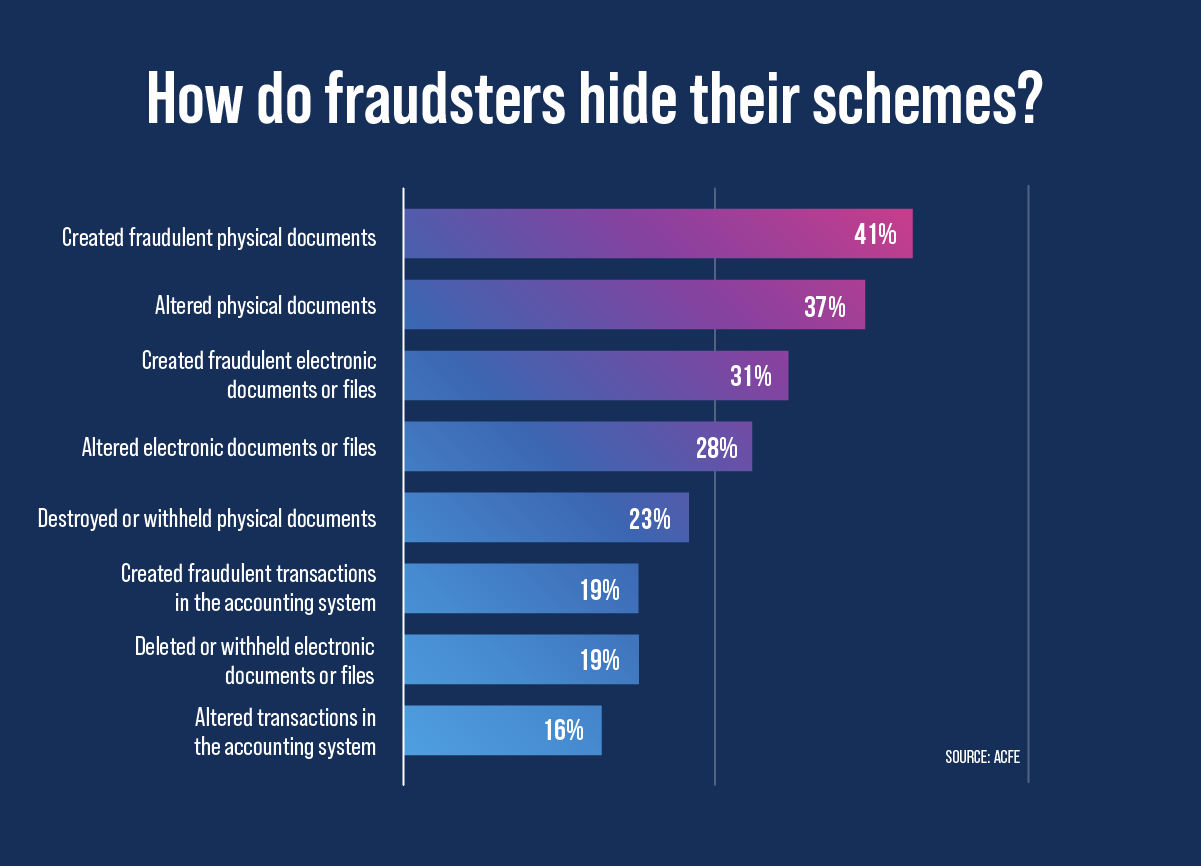
In just under half of all cases (43%), occupational fraud is detected by a tip or a whistleblower reporting the fraudulent activity. After reporting, most companies detect fraud through internal audits (14%) and related activities like management review (13%), document examination (6%), and account reconciliation (5%).
AP audits help identify and prevent fraudulent activities by scrutinizing payables, invoices, payments, and vendor records to uncover irregularities and discrepancies and safeguard the company’s financial resources.
Benefit 2: Identifying and correcting unrecorded liabilities
AP audits detect invoice processing, payment, and data entry errors that, if left unchecked, could lead to financial losses or operational inefficiency. By finding and correcting unrecorded liabilities, audits ensure accurate financial records and improve AP processing efficiency.
Benefit 3: Compliance with regulations and standards
AP audits verify that the company adheres to regulatory requirements, industry standards, and internal controls and policies, mitigating the risk of penalties, legal issues, and reputational damage.
Benefit 4: AP process improvement
Audits help companies identify bottlenecks, redundancies, and areas for improvement by assessing the effectiveness and efficiency of AP controls, workflows, and documentation. They can use these insights to streamline processes, automate tasks, and enhance internal controls to save money, speed up payment cycles, and improve supplier relationships.
Core AP audit procedures
While each audit is different, AP audits generally include four procedures.
1. Verify completeness of accounts payable records
The primary goal of most audits is to verify that financial records are complete. To do this, auditors compare payable records to the company’s financial statements to confirm they match. They may also review the end-of-year close process and perform cut-off tests to ensure expenses are posted in the accounting period when they were incurred. Finally, auditors may identify and investigate unusual transactions and unrecorded liabilities.
2. Validate compliance
Auditors will also check to ensure accounts payable transactions and actions comply with generally accepted accounting principles (GAAP) and any applicable regulations such as Sarbanes-Oxley (SOX) requirements. They will check transactions from start to finish and examine the company’s audit trail to ensure the business used the right accounting procedures, complied with regulations, and received the correct discounts.
3. Confirm transactions are valid
AP audits identify possible fraud and errors by performing validity testing on AP transactions. Validity testing ensures the audit trail and financial statements are free from material misstatements by confirming that transactions are accurate and legitimate. Testing can involve contacting suppliers to confirm transactions are valid and investigating any exceptions.
4. Verify data accuracy
Auditors examine AP processes to ensure all transactions and events have been properly recorded and disclosed, and that the audit trail is accurate. Investigators examine the department’s Standard Operating Procedures (SOPs) in detail and assess how closely employees follow them. They will also clarify unusual transactions and confirm that payment amounts are recorded accurately.
When should you audit accounts payable?
The ideal timing for AP audits depends on a company’s structure, needs, and regulatory obligations. There are two primary scenarios when companies should conduct an AP audit: scheduled audits that involve routine assessments at regular intervals and triggered audits initiated in response to red flags or unusual AP activities. Understanding the appropriate timing for each type of audit is key to effective financial management and risk mitigation.
Scheduled audits
Scheduled audits are conducted at regular intervals, such as annually or quarterly. The goal of scheduled audits is to enable early detection of fraud and errors, provide ongoing assessment of AP processes, and ensure regulatory compliance. The frequency of scheduled audits depends on several factors, including:
- Company size: Large companies with high transaction volumes and complex AP processes may require more frequent audits.
- Industry: Highly-regulated industries like healthcare or finance or industries with a high risk of fraud may require more frequent audits than less-regulated or lower-risk industries.
- Risk assessment: A company with a history of fraud or significant AP errors might choose more frequent audits to help it assess and fine-tune internal controls.
Triggered audits
Triggered audits, or ad hoc audits, are conducted in response to a specific event or red flag that indicates potential issues in the AP process. By promptly initiating a triggered audit, companies can quickly identify and address potential issues before they escalate into major problems. Some triggers for an AP audit include:
- Unexpected or unexplained variances in AP balances: Unexplained variances can indicate unrecorded liabilities, fraud, or errors. For example, if the month-end AP balance is higher than expected, it could indicate a duplicate or fraudulent payment.
- Suspicious vendor activity: A sudden increase in payments to a vendor, payments with incomplete or inaccurate information, or payments made outside business hours could indicate fraudulent activity.
- Internal control weaknesses: If companies detect a vulnerability in their internal controls they may conduct an audit to ensure the vulnerability hasn’t been exploited or hasn’t caused discrepancies. For example, a company discovers a single AP clerk is reviewing, approving, and paying invoices, which is a failure of separation of duties. They decide to audit AP to verify if the employee engaged in fraud.
Stages of the AP audit process
AP audits generally follow four stages:
- Preparation and planning
- Testing and investigation
- Audit report
- Follow-up review
Let’s break these out.
Step 1: Preparation and planning
Good preparation and planning make the AP audit process easier and more efficient. Here are some ways you can prepare your accounts payable department for an audit.
Communicate with your AP team
Good communication helps ensure everyone is aware of the audit process. Let your AP team know the audit is coming and what is expected of them.
Collect and organize AP documents
Collect AP documents, make sure they’re up to date, and organize and store them in an easily accessible location. Documents you should gather include:
- Vendor invoices
- Purchase orders
- Receipts
- Contracts
- Supplier/vendor master file and contact information
- Employee master file
- Internal controls and policies
- AP aging report
- Expense policy
- Credit card statements
- Bank statements
Gather and highlight documents such as one-off vendor contracts, invoices without POs or contracts, and receipts for cash transactions.
Define the audit scope and objectives
Setting the scope and objectives for the audit up front helps keep the process focused. For example, will the audit cover a specific time period? Are you auditing transactions with certain vendors or a specific location or subsidiary?
Select an audit team or external auditor
If your company doesn’t have a dedicated internal audit team, you will need to create your own. Select team members who have the experience and skills to complete the audit, are trustworthy, and have the personal skills to engage with employees, vendors, and stakeholders respectfully.
Schedule the audit
Once you’ve defined the audit scope and selected a team, schedule a kickoff meeting to review the audit goals, establish standard operating procedures, and set a timeline for the audit.
Step 2: Testing and investigation
During this phase, the audit team will review the company’s financial records and documents, including the balance sheet, check register, invoices, purchase orders, bank statements, and general ledger.
Auditors may pull transactions, contact vendors to verify invoices are authentic, and confirm payments were made to legitimate vendors. They will also evaluate AP processes to assess risks such as the likelihood of errors, inadequate internal controls, and vulnerability to fraud and recommend measures to mitigate these risk factors.
Step 3: Audit report
After their investigation, the auditors will prepare and present an audit report summarizing their findings and recommendations. The audit report typically includes an assessment of AP performance, a review of internal controls and policies, a list of unrecorded liabilities detected and corrected, and recommendations to improve AP processes and controls.
Step 4: Follow-up review
After presenting the report and recommendations, the auditors schedule and perform a follow-up review. The purpose of the follow-up review is to ensure the audit recommendations have been implemented and to evaluate their effectiveness in addressing the identified issues.
Following these steps will help you plan and perform a smooth and organized AP audit. Let’s look at best practices to optimize the audit process.
Best practices for effective AP audits
You can do several things to make AP audits easier, more efficient, and more effective.
Maintain a complete AP audit trail
Maintaining a complete AP audit trail ensures auditors can easily access the records, documents, and communications they need to do their job. Here are some things you can do to keep a clean audit trail:
- Regularly check POs, invoices, journal entries, and bank statements for discrepancies and make corrections when necessary.
- Centralize and organize AP and vendor communications.
- Monitor transactions to identify unrecorded liabilities, cash or duplicate payments, and other suspicious activity.
- Organize and store invoice and purchase order details for easy access and retrieval.
Keep financial records up to date
Make a practice of keeping AP records accurate and up to date to make it easier for auditors to access the information they need. Keeping records up to date also helps you identify and investigate unrecorded liabilities that could be flagged during an audit.
Document Standard Operating Procedures
If you already have Standard Operating Procedures (SOP) for accounts payable, ensure they’re documented and accessible. To ensure a smooth audit process, your SOPs should include the procedures for the following:
- Invoice capture, data entry, coding, and matching
- Approving invoices, including approver roles and approval thresholds
- Payment processing
- AP reconciliation
Verify that the SOPs have been implemented and followed, and identify and correct any weak or absent internal controls.
Identify and document AP roles and verify internal controls
To minimize the risk of fraud and errors, identify and document the employees responsible for key AP tasks like invoice entry, approvals, payments, and updating financial records. Ensure a clear separation of duties for these roles so a single individual isn’t handling critical tasks.
Review payment methods and policies
Document your payment policy and the payment methods (wire transfer, ACH, credit cards, payment cards, checks) your company uses to pay suppliers. Verify there are controls in place to prevent payment fraud such as shadow spend, and ensure these controls are documented and being enforced.
Review vendor relationships
Regularly review supplier information and documents such as contracts, quotes, estimates, SOWs, invoices, and communications. Confirm your SOP and policies. Include rules to vet and onboard new vendors, identify which employees are authorized to add new vendors, and restrict purchases to approved vendors.
Automate accounts payable
Manual AP processes are slow, prone to errors, and vulnerable to fraud. They also make it difficult for businesses to maintain accurate, up-to-date financial records, leaving them unprepared for AP audits.
AP automation software automatically captures, enters, and codes invoice data to eliminate errors and ensure accurate invoice processing to make AP audits easier and more effective. Many solutions automate invoice matching and approval routing to reduce errors and fraud and ensure a complete audit trail. Some solutions, like Stampli, also feature real-time reporting and analytics capabilities that give you visibility and control over AP processes.
How AP automation enhances AP audits
AP automation platforms are revolutionizing how businesses handle AP audits. They streamline accounts payable processes and reduce manual intervention to significantly enhance accuracy, reduce errors and fraud, and provide actionable AP data. By centralizing transaction data, communications, records, and documents, automation reduces invoice discrepancies, provides better fraud detection and prevention, gives visibility into spend, and improves enforcement of internal controls.
Let’s see how automation helps AP audits.
Automatically capture and organize data and documents
AP automation platforms use OCR and image processing technology to capture, enter, code, and store invoices and other documents. Automated invoice processing reduces processing errors and fraud and eliminates duplicate invoices. Also, by making transaction details and documents accessible and searchable by auditors, automation makes it easier to review transactions, detect and rectify discrepancies, and verify invoice data.
Pro tip: Consider platforms like Stampli that offer AI-powered invoice processing for even higher levels of error detection and correction. One customer praises how Stampli improves their auditing process, saying that Stampli “holds individuals throughout our company accountable for their reviewing and approving Invoices. We can easily manage correspondence. Track invoices that are past due. Pull everything into one nice neat report to review with our users. The reports make a great resource to share with GMs that can quickly review what vendors or invoices that may be causing holds for our company.
“Corresponding within Stampli vs multitudes of emails, team chats and phone calls is THE BEST…Reporting of where we are in all open invoices throughout all locations. Being able to quickly forward or share an open invoice between users. Archive and historically capture data needed for audits.”
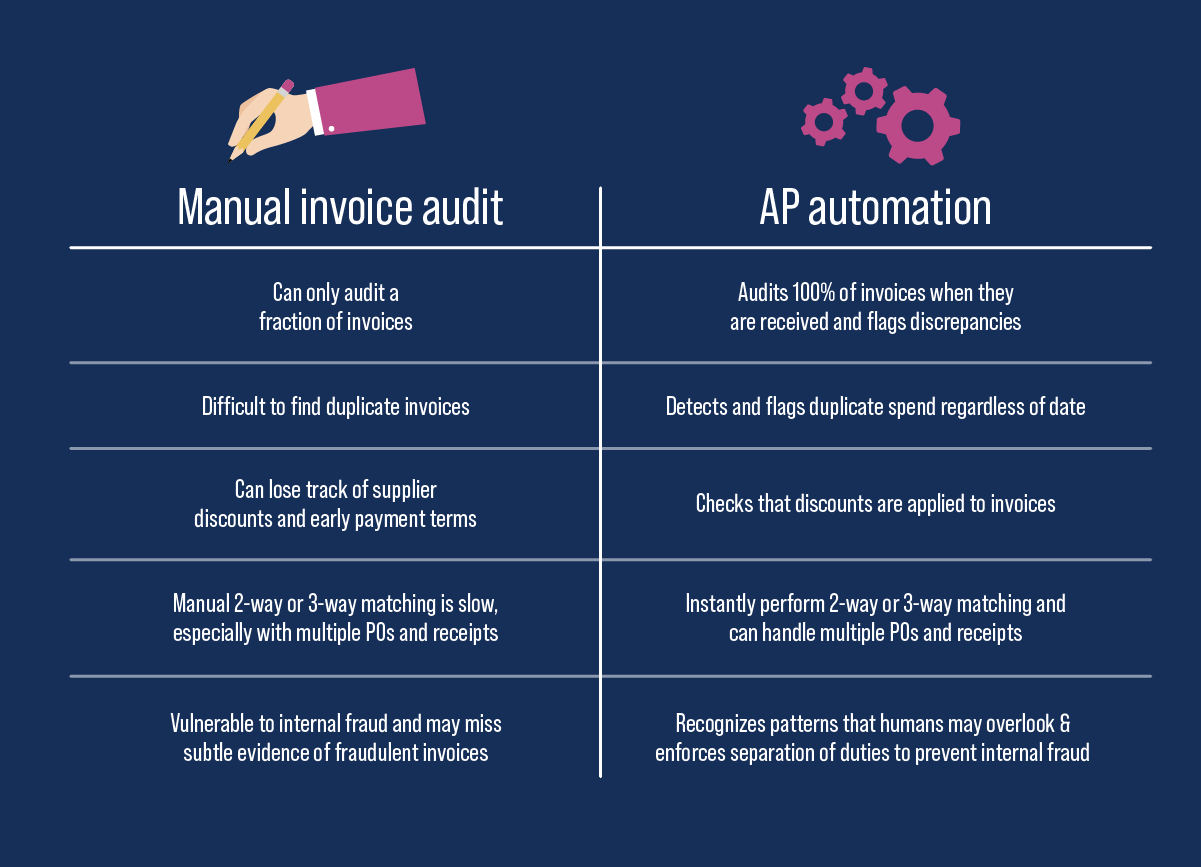
Provide end-to-end AP process visibility
AP automation platforms provide real-time visibility and analytics to provide visibility and control over AP processes. They enable AP teams and auditors to check invoice status, review transactions, and monitor AP department performance.
Pro tip: Leading platforms like Stampli feature AP reports and visual dashboards that provide real-time insights and KPIs. Finance leaders can check invoice status and AP performance at a glance, identify bottlenecks, and confirm that internal controls are being enforced.
“Stampli has transformed business as we know it in the finance division,” said one Stampli customer in a recent review. “We process thousands of invoices monthly without hiccups, and it has cut down on employees having to request information from the finance dept. as they are able to pull up any invoices that have been placed in their queue to see the status or get a copy if needed. There are multiple reports that can be run through Stampli, from spend per vendor to productivity of accounts payable administrators. You can break down the time it is taking employees to approve their invoice and find any bottlenecks in the process.”
Mitigate fraud and errors
Automated accounts payable solutions help mitigate fraud and errors in several ways. First, they replace error-prone manual processes by automating data capture and entry. Second, they provide error and fraud detection features such as duplicate invoice detection. Third, they enforce internal controls through workflow automation, user roles, and approval routing.
Pro tip: Invest in the AP platform that uses Cognitive AI™ and machine learning technologies to provide accurate invoice capture, advanced fraud and duplicate detection, and dynamic or fixed workflows. For example, Billy the Bot, Stampli’s AI copilot, learns your cost accounting rules and AP processes to improve invoice capture accuracy and efficiency. It also automatically matches invoices to purchase orders and receipts to detect errors and fraud.
“Stampli’s incorporation of machine learning or A.I. (with Billy the Bot) has saved our team a lot of manual labor,” says one AP manager. “We were previously coding all invoices manually, which included selecting the vendor information, invoice dates, and GL coding. Billy is like an added employee to our team! We also have an incredible amount of reporting for our AP department that wasn’t available through our last program….
“Stampli has allowed us to take the next step (and would likely help others take the first step of going paperless) in AP automation. Our biggest pain points with our former software were how manual the process was of coding and approving invoices and the lack of any reporting capabilities. Stampli has solved these problems with ease! We now have a lot of automation and much more reporting capabilities than before.”
Control vendor payments
Automated payment processing solutions help businesses track and manage vendor payments by centralizing payment processing onto a single platform. They let AP teams track, verify, record, and control payments in real-time, reducing mispayments, errors, and fraud. Like AP platforms, payment processing systems also help enforce internal controls through access restrictions, user roles, approval routing, and spending limits.
Pro tip: Leading payment processing solutions integrate with business systems to provide end-to-end visibility and control over transactions. Consider a solution like Stampli Direct Pay or Stampli Card that seamlessly integrates with Stampli’s AP automation platform and leading ERPs.
In a recent review, one Stampli customer talked about how Stampli and Stampli Direct Pay have optimized their AP processes: “Our invoice approval process has been brought to the next level, has been standardized. All of our non-Accounting staff that needs to interact with Stampli raves about it. We have the Direct Pay add-on and marveled at the increase in visibility and control while still saving time over stuffing and stamping envelopes.
“For a ‘can’t deny it’ data point: in our 2nd week on Stampli, we processed more invoices than we ever had in a week and had the lowest number of invoices pending approval since we’ve tracked that stat….
“Our data entry accuracy has improved significantly. Our invoice approval process has become faster AND more valuable (approvers actually see the invoice when approving), and our payment review and approval process has become more valuable.”
Optimize vendor relationships
AP automation platforms strengthen vendor relationships and reduce vendor risk. They simplify AP audits by making supplier payments more transparent and accurate, tracking early payment discounts, and reducing payment disputes. Many platforms also report vendor spend by category, location, or other criteria, making it easier for auditors to focus on transactions with a specific vendor.
Pro tip: Leading AP platforms offer vendor document management and reporting capabilities that enhance the effectiveness of AP audits. For example, Stampli centralizes and records all vendor conversations. Additionally, through its Advanced Vendor Management feature, Stampli automatically keeps vendor information and documents up to date, saving auditors from having to search for this information manually.
“Stampli is a top-tier A/P automation platform,” said a Stampli customer in construction. “It contains a plethora of technology-packed features to help cut back low-value tasks like data entry and invoice approval routing. In addition, it features a great vendor management system for subcontractor documents that makes vendor management for construction companies a breeze. It is intuitive and easy to implement and use by a wide variety of technology proficiency levels.”
Make AP audits painless with Stampli
AP audits are your best defense against fraud and errors, and Stampli is the best investment in ensuring easy and effective AP audits. It combines powerful invoice capture and verification capabilities with audit-ready invoice records, histories, payment data, and communications.
Stampli consolidates documentation, communications, transactions, and records on the invoice itself to ensure that AP teams and auditors have the information they need to do their jobs effectively and efficiently.
AI-powered invoice verification
Stampli’s AI technology, Billy the Bot, uses Cognitive AI to verify every invoice that enters the system. It instantly detects and identifies discrepancies between POs, receipts, and invoices to provide the best defense against fraud and errors.
Complete AP audit trail and invoice reconciliation
Stampli complies with SOC 2 Type 2 requirements for data security, availability, processing integrity, confidentiality, and privacy. It helps maintain a complete audit trail by storing all invoices, transaction data, and records of actions, approvals, and decisions and ensuring they are accessible and auditable.
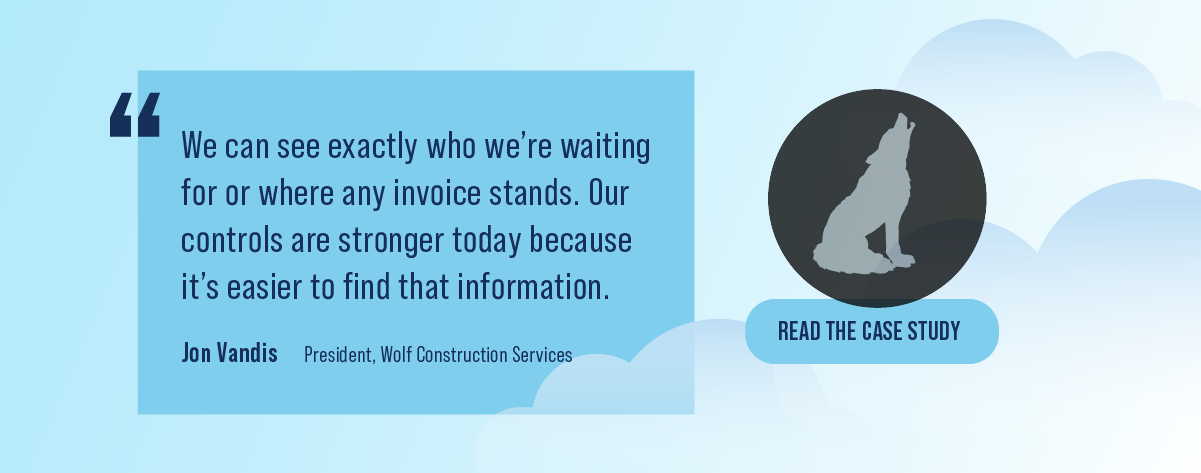
Integration with ERPs ensures data integrity
Stampli’s pre-built integrations support full native functionality for over 70 ERPs and accounting software platforms. They let businesses sync invoices, purchase orders, receipts, payment data, financial records, and other documents in real time. By ensuring data integrity across the organization, Stampli makes AP audits and reconciliation easier and more accurate.
Be well-prepared for your next AP audit. Contact one of our AP experts today for a free demonstration of how Stampli makes audits painless.